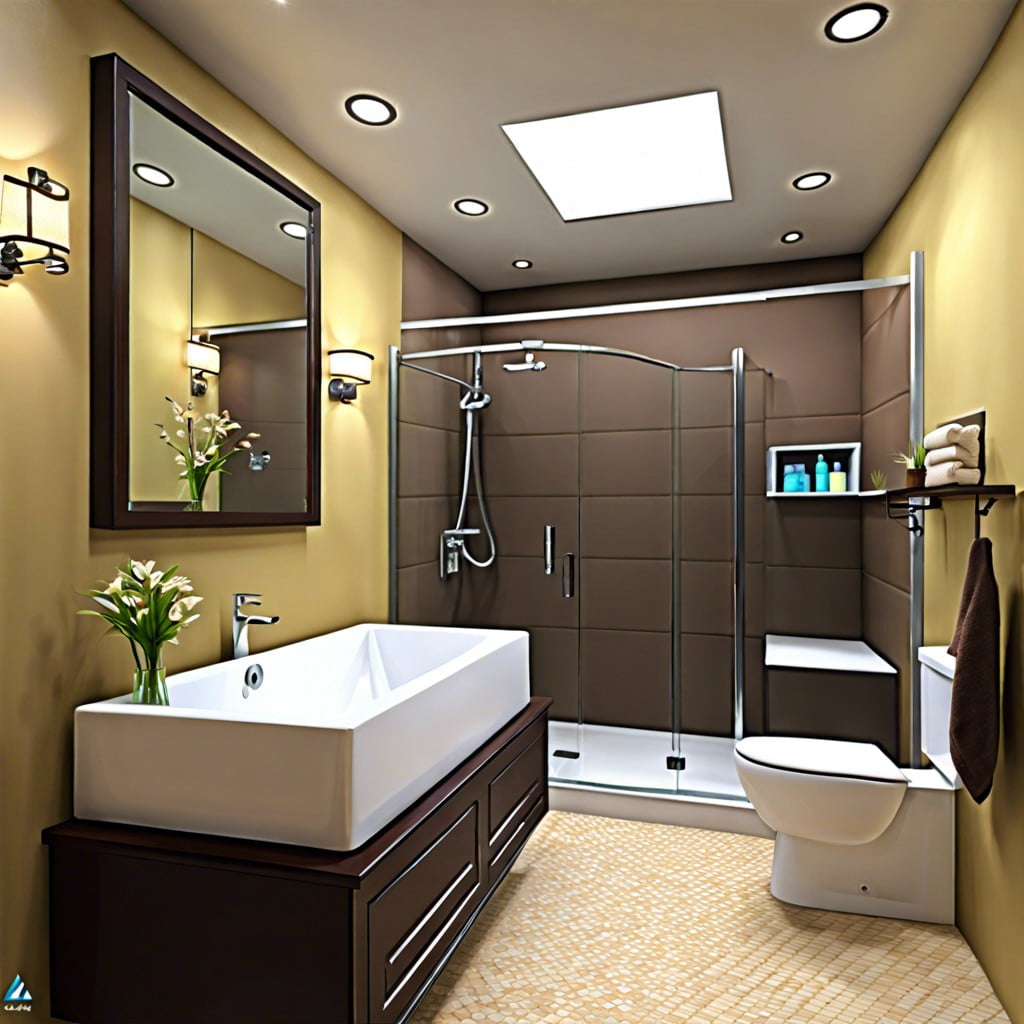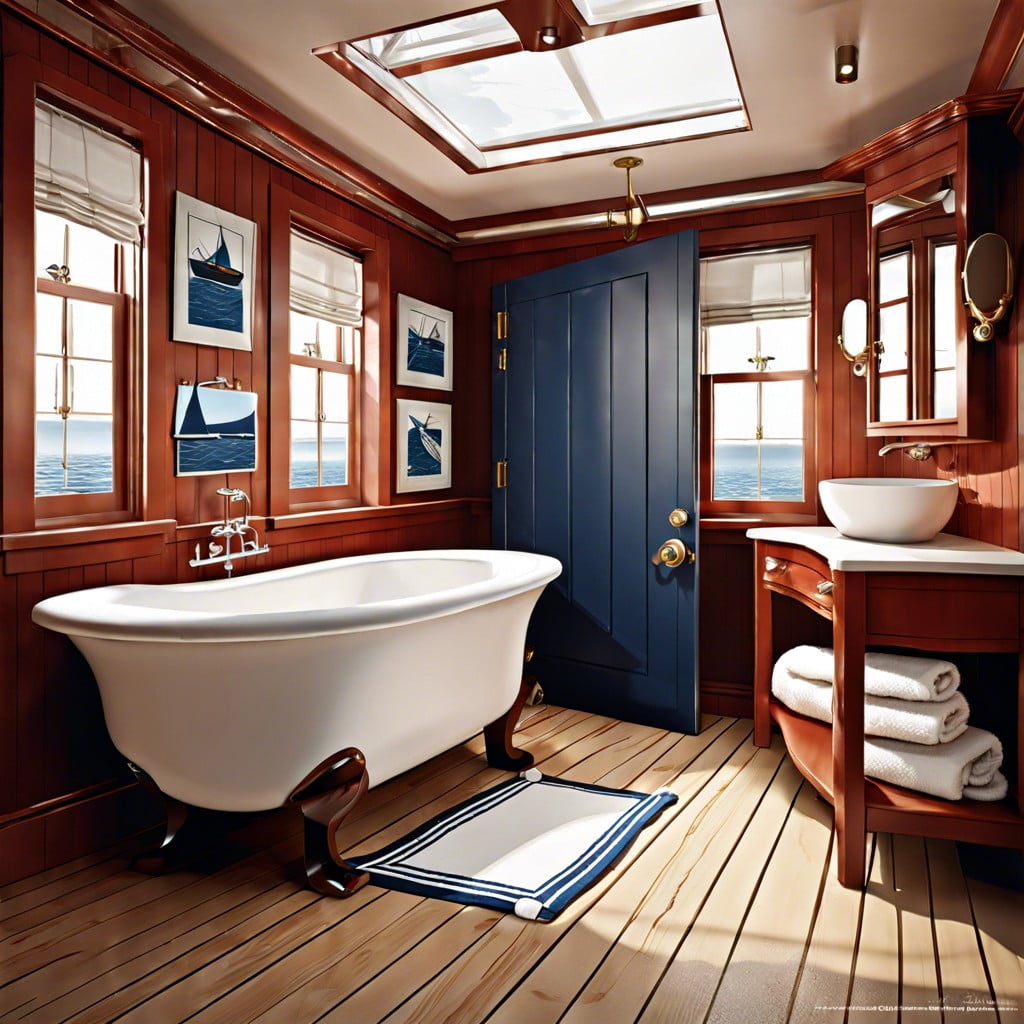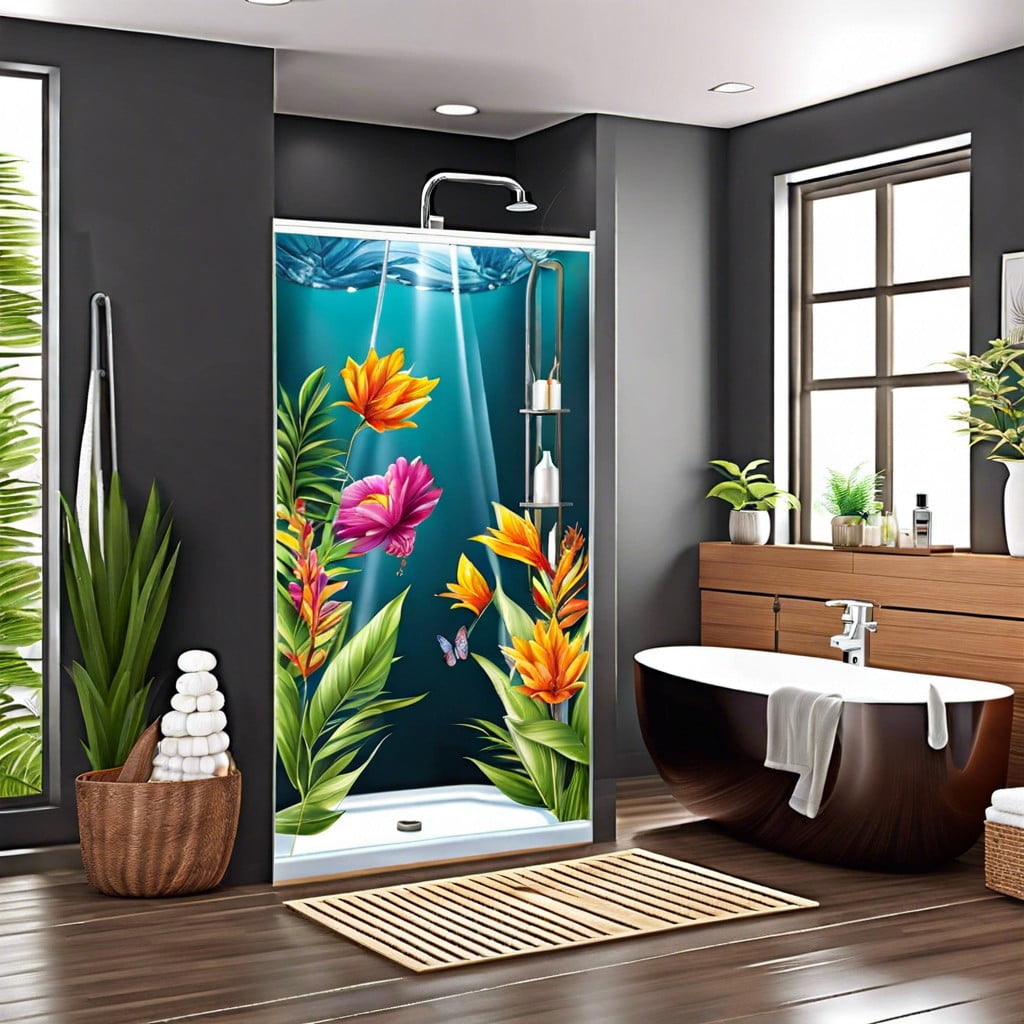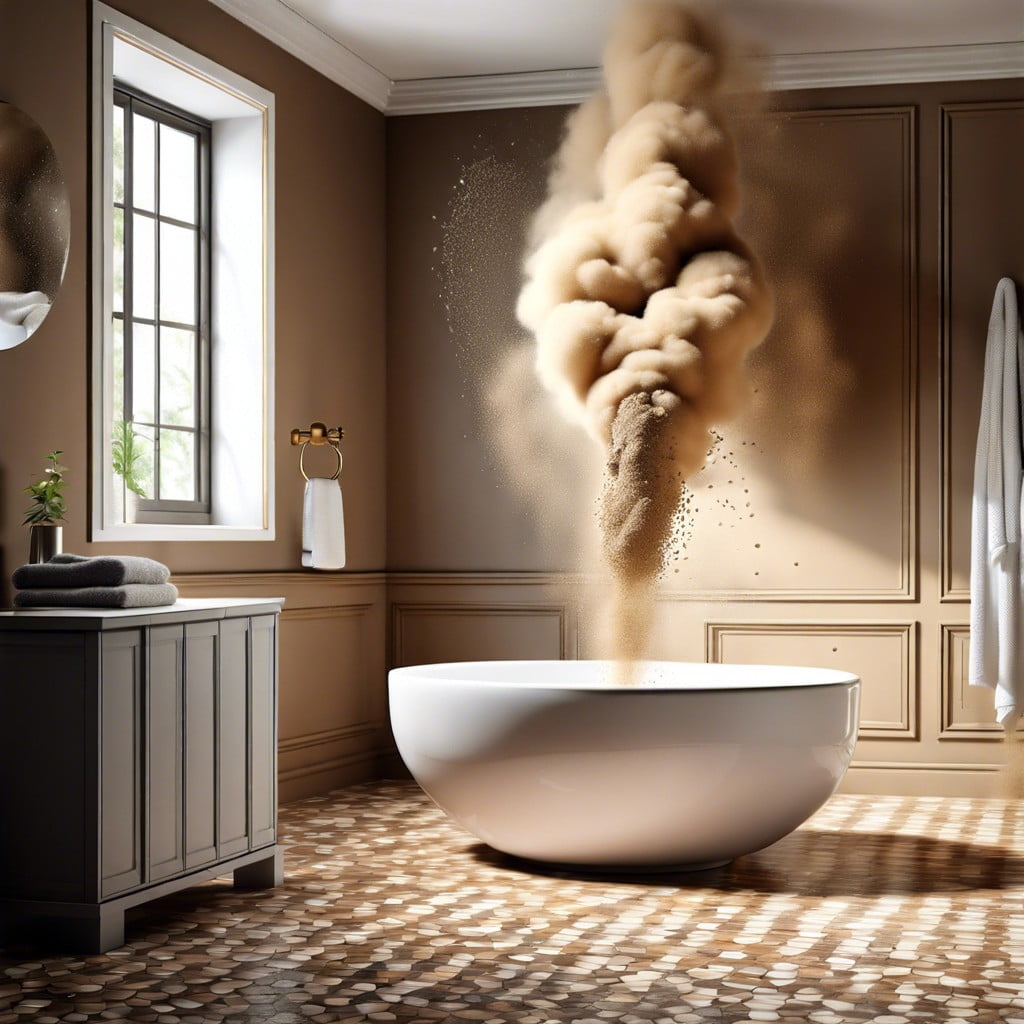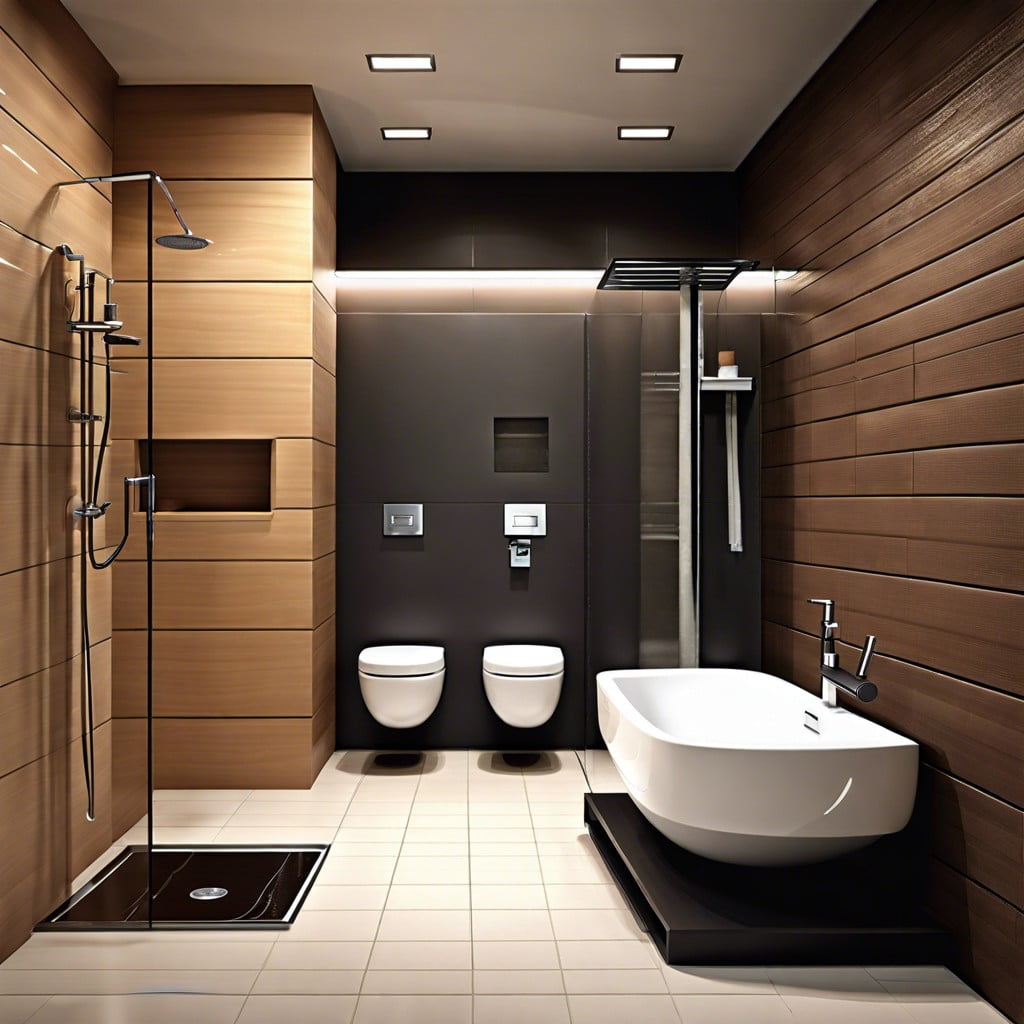Last updated on
Discover how the elegant and practical elements of a French-style bathroom blend functionality with beauty and what it means to integrate this je ne sais quoi into your own space.
Key takeaways:
- “La salle de bain” is the term for a bathroom in French
- “Les toilettes” refers specifically to a toilet
- “Où sont les toilettes?” is the polite way to ask for the bathroom
- Restroom etiquette in France: cleanliness is important, wait your turn in line
- Public restrooms may have fees and cleanliness can vary
Bathroom and Toilet in French: How to Say It
Navigating the linguistic maze in a French-speaking country begins with knowing the right terms for the bathroom. “La salle de bain” usually refers to a room with a bath or a shower, where one goes to bathe. If you’re specifically in search of a toilet, “les toilettes” is what you’re after, often abbreviated to just “toilette” in the singular form.
In some contexts, especially in more formal settings or signages, you might come across “WC” (water closet), an acronym of English origin widely recognized in France. An essential phrase to commit to memory is “Où sont les toilettes ?“, which means “Where is the toilet?” Being aware of these distinctions can save you from potential embarrassment and ensure your needs are understood swiftly.
Where Is the Bathroom in French
Knowing how to ask for the bathroom is essential for anyone traveling in France or in a French-speaking region. The most straightforward way to request this information is “Où sont les toilettes?” It’s polite and widely understood. In more formal settings, you could use “Où se trouve les toilettes, s’il vous plaît?” to add a layer of courtesy.
When exploring less touristy areas, be prepared for variations like “WC” (water closet), “les cabinets,” or “les sanitaires.” These synonyms for bathroom might puzzle English speakers but are common in French vernacular.
Lastly, it’s prudent to familiarize oneself with gender-specific doors, “Dames” for women and “Hommes” for men, to avoid any awkward situations. It’s a small linguistic preparation that can go a long way in navigating the cultural landscape smoothly.
Bathroom and Toilet Etiquette in France
Understanding bathroom etiquette in France can navigate social situations more comfortably and avoid any faux pas. Firstly, when visiting someone’s home, it’s polite to ask for the restroom by inquiring, “Où sont les toilettes, s’il vous plaît?” Maintain discretion and cleanliness as a sign of respect for your host.
In public spaces, restrooms are often labeled “WC” (water closet), “Dames” for ladies, and “Hommes” for gentlemen. Be prepared to pay a small fee for using public restrooms, typically maintained by an attendant. Always have change ready to avoid any awkward situations.
Expectations for cleanliness are high. After using the facilities, ensure that everything is left as you found it, which means wiping the sink if you splashed water and making sure the toilet is flushed properly.
Lastly, while restroom lines can be lengthy, especially for women, patience and politeness are key. Cutting in line is considered very impolite and can attract unfriendly attention. Queue respectfully and wait your turn. It’s all part of showing courtesy and blending in with the local customs.
Going to the Toilet in a Café or Restaurant
In France, it’s common for cafés and restaurants to have restrooms primarily for customers. Often, if you’re not patronizing the establishment, a polite request to use the facilities, accompanied by a small purchase, can smooth the way. It’s also not unusual to find a fee for non-patrons, sometimes enforced by a restroom attendant who maintains cleanliness. Don’t expect the restroom to be prominently signed; you might have to ask, “Où sont les toilettes, s’il vous plaît?” Remember to carry some change just in case there’s a charge, and note that, unlike in some countries, it’s less common for the restroom to provide all amenities – consider having hand sanitizer or tissues on hand.
Public Restroom in France
Navigating public restrooms in France comes with its own set of unwritten rules. First, they are often labeled as “WC” (water closet), which can be a surprise to those expecting the word bathroom or toilet. Secondly, it’s not uncommon to pay a small fee to access facilities, especially in tourist areas or at train stations—so always carry some coins.
Be prepared for mixed-gender facilities, as it’s quite common to find a shared sink area. And, cleanliness levels can vary significantly, so having your own supply of hand sanitizer and tissues is advisable.
Lastly, don’t expect a public restroom to always be close by when you need one. Plan ahead when possible, especially if you’re setting off on a long walk or tour. French cities are not as abundant with publicly available restrooms as some other countries, so use facilities at museums, restaurants, or department stores when the opportunity presents itself.
Recap
